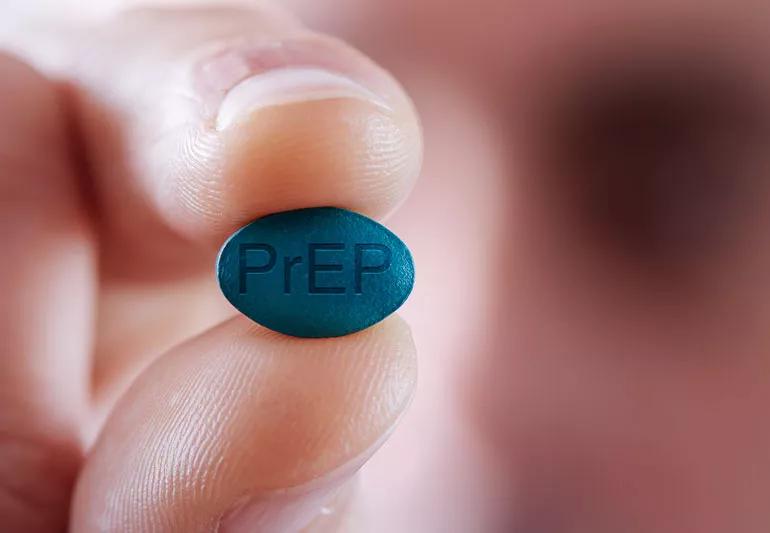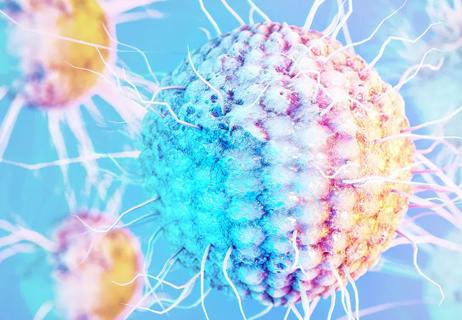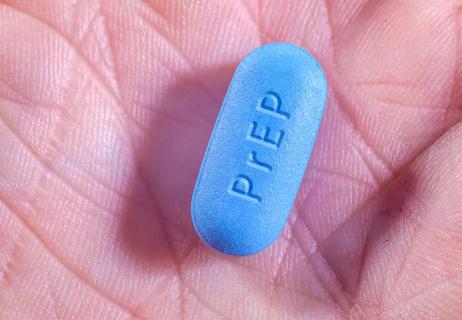This medication can significantly lower your risk of HIV

As recently as the 1990s, it was unthinkable that medication could someday prevent the spread of HIV. But in 2012, the U.S. Food and Drug Administration (FDA) approved the first medication known as pre-exposure prophylaxis, or PrEP, which can prevent HIV from taking hold in your body.
Advertisement
Cleveland Clinic is a non-profit academic medical center. Advertising on our site helps support our mission. We do not endorse non-Cleveland Clinic products or services. Policy
Now, PrEP has become an important tool in combating the spread of HIV. Internal medicine specialist James Hekman, MD, explains what PrEP is, how it works and whether it’s right for you.
Human immunodeficiency virus, or HIV, is a sexually transmitted infection (STI) that attacks your immune system, which can make it difficult for your body to fight off illness. The most common way people get HIV is through vaginal, oral or anal sex, but you can also get it by sharing needles to take drugs.
But taking PrEP can prevent you from contracting HIV by blocking the virus from taking hold within your body.
The name says it all: “Pre-exposure” means “before you get exposed,” and “prophylaxis” is a common medical word that refers to actions you take to prevent a disease from developing or spreading. PrEP, then, is medication you take to keep you safe from HIV — before you’ve ever been exposed to it.
“PrEP is for people who don’t have HIV but are at an increased risk of contracting it through sex or injection drug use,” Dr. Hekman explains.
Your doctor may recommend you go on PrEP if you:
Advertisement
PrEP isn’t a particular brand; rather, it’s a category. Right now, there are three types of PrEP:
You should be on PrEP for one to three weeks in order for it to start working. But to maximize your protection from HIV, you have to be sure to take every dose. Simply put, Dr. Hekman says, “PrEP is incredibly effective, but only if you take it as prescribed.”
HIV.gov reports that when taken correctly, the pill forms of PrEP reduce the risk of getting HIV from sex by about 99%, and it reduces the risk of getting HIV from drug use by at least 74%. But the medication isn’t nearly as effective if it isn’t taken consistently, so be sure to set those daily reminders.
PrEP is considered safe, but you may experience some side effects at first. They should go away on their own, but talk to your doctor if you continue experiencing them:
If you have kidney disease or a history of hepatitis B, be sure to tell your doctor. It may impact whether you’re able to go on PrEP.
Condoms are just as important as they’ve always been. “PrEP does not prevent the spread of STDs,” Dr. Hekman says. You can (and should) pair PrEP with condom use for the best chances of reducing your risk.
If you’re on gender-affirming hormone therapy, you may be worried about whether and how PrEP will interfere.
Trans women have been reported to have lower levels of PrEP in their bloodstream than other people, Dr. Hekman says, but there’s not yet enough research to say why. And because the transgender population is at high risk for HIV, it’s important to work with a doctor who can ensure that you can remain on hormone therapy and guard yourself against HIV.
“We know that when trans women are under medical care, doctors can monitor their levels of both HIV control and hormones,” Dr. Hekman explains. “We can adjust doses to make sure that they achieve appropriate levels of gender-affirming hormone therapy while also remaining protected from HIV.”
Advertisement
PrEP is a pre-exposure medication, which means that in order for it to do its job, you need to be taking it before you’re exposed to HIV. That means PrEP is not the right medication to take if you’ve been exposed to HIV and want to reduce your chance of infection.
If you’ve been exposed to HIV and aren’t already on PrEP, see a doctor — whether your primary care physician or at an emergency room or urgent care facility — within 72 hours. They can prescribe post-exposure prophylaxis (PEP), medication to prevent HIV after exposure. Unlike PrEP, PEP is used in emergency exposure situations.
PrEP is only available by prescription, so if you’re interested in starting it, make an appointment to speak with your doctor. “They’ll give you an HIV test and talk you through any concerns you have about going on PrEP,” Dr. Hekman says.
Looking for a healthcare provider who is trained in health issues specific to the LGBTQIA+ community? Many nationwide health services and state clinics are open and affirming, and there are other ways to find an LGBTQIA+ doctor’s office near you.
If you’re concerned about how to pay for PrEP, be sure to ask your doctor about that, too. Most insurance companies and state Medicare plans cover PrEP, and other options are available for those who qualify.
Advertisement
Learn more about our editorial process.
Advertisement

A compromised immune system requires precaution

It’s not just smoking and genetics that can increase your risk of cancer

Contributing factors include racial disparities, high barriers to care and more

Bleeding is a risk and warrants taking care, but the reward of this lifesaving medication is great

Severe and debilitating headaches can affect the quality of your child’s life

Type 2 diabetes isn’t inevitable with these dietary changes

Applying a hot or cold compress can help with pain